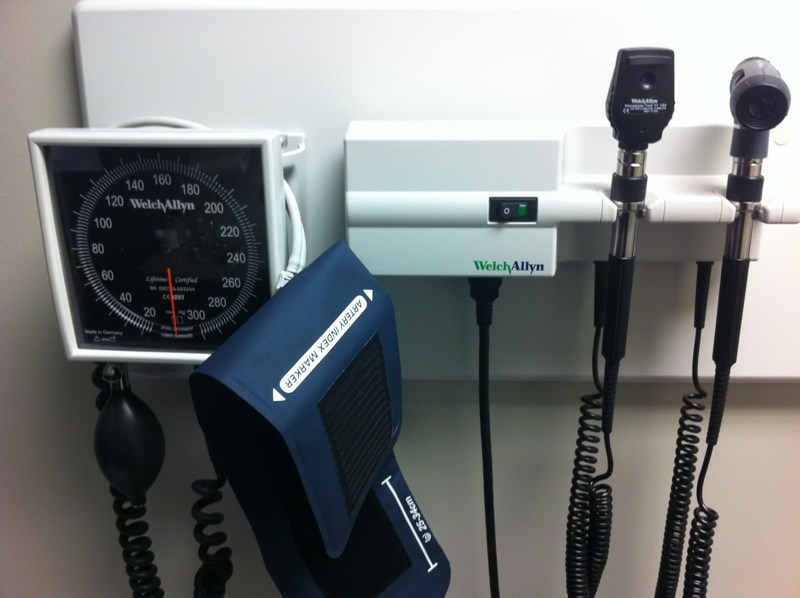As much of society is shifting to the virtual world to connect amid the COVID-19 crisis, so too are doctors.
Many family physicians and walk-in clinics have switched to seeing the majority of patients by video chat to reduce the risk of spreading the virus.
Dr. Kathleen Ross, president of Doctors of B.C., said there’s a sense among the public that doctors are busy and don’t have time to see patients for regular issues.
That’s not the case, said Ross, a family doctor in Coquitlam. She pointed to the proliferation of online ads recommending for-profit medical services as one reason why patients are turning away from their family doctors, but Ross said these services can’t provide the same level of care as a family doctor who has known a patient for years. “If the patients think that they’re bothering their family physician and don’t reach out, I’m deeply concerned that there could be negative health consequences,” she said.
“We’ve been actively trying to reach out to those in our practices that are most vulnerable to make sure that they know: ‘We’re here for you,’ ” Ross said.
Dr. Kathy Dabrus, a family physician with Victoria Division of Family Practice, said doctors are able to assess most patients’ needs via video calls.
“We can actually look at some things, so when people have something on their skin, or sometimes it’s easier to assess a patient when you can actually see them, see if they’re having difficulty breathing or see if they’re not looking well in terms of their colouring,” she said.
She said doctors continue to see a small number of patients in-person if they require a physical examination and will refer patients to labs for x-rays or further testing if needed.
Doctors are still treating patients for conditions unrelated to COVID-19, but are deferring elective and preventative visits, including pap tests, prostate checks, annual physicals, and growth and development checks for healthy babies, Dabrus said.
The introduction of tele-health options had already been in the works to increase access to medical care for those with mobility challenges or living in remote areas, but COVID-19 speeded up the process, Dabrus said.
Patients have been open to the move, she said.
Dr. Ian Bridger, who runs four walk-in clinics in Greater Victoria that are providing tele-health care, anticipated virtual appointments filling up with people worried about COVID-19, but he has seen the opposite.
“The clinics are pretty quiet. Three weeks ago, we would have a queue of people outside the door every morning,” he said.
Now he’s seeing just a slow trickle of patients. Bridger can’t say exactly why that is, but one possibility is that people aren’t getting sick as often now that they’re spending most of their time at home.
“They’re not getting coughs and colds and things, because their kids aren’t at school, they’re not out,” he said.
“We wondered whether they actually think the clinics are shut, because so many things are shut.”
Bridger’s walk-in clinics aren’t the only ones experiencing abnormally short wait times.
A search on Medimap, which provides wait times for about 80 per cent of the province’s walk-in clinics, showed several clinics in Victoria with no wait time on Friday afternoon.
Medimap CEO Blake Adam said the drop in wait times started about two weeks ago and followed a “massive surge” in February as COVID-19 was slowly starting to spread in Canada.
“Over a one-week period, clinics started to shift toward just doing video and phone consultations and I think patients just stopped going to clinics. Over the past two weeks, it’s just been consistently dropping — the wait times to see a doctor,” Adam said.
Medimap has introduced a service to connect patients with a doctor for a video call within 10 minutes.
Adam said the service connects patients looking for quick care with doctors who are available at that moment.
“What we’re doing is using idle capacity in the system by connecting patients who are looking for immediate access to care and giving that to them and also ensuring that doctors are able to stay busy and keep the lights on at their clinics,” Adam said.
For anyone worried they have COVID-19 symptoms, getting a virtual appointment with a doctor at a walk-in clinic is an alternative to calling the province’s busy 811 COVID-19 information line.
Doctors at Bridger’s four clinics — Burnside Family Medical Clinic, Uptown Medical Clinic, Tillicum Medical Clinic and Cook Street Village Medical Clinic — can assess whether a patient is exhibiting COVID-19 symptoms.
“If they’re fit and healthy, we’re mostly advising patients to stay home, but in special circumstances we can arrange for them to have an assessment done, where they might be tested, because those assessments are done by referral by a doctor,” Bridger said.
To comment on this article, send a letter to the editor.
• Email: [email protected]
• Mail: Letters to the editor, Times 91ԭ��, 2621 Douglas St., Victoria, B.C. V8T 4M2.
Letters should be no longer than 250 words and may be edited for length, legality or clarity. Avoid emailing your letter as an attachment. Please include contact information; we require your first and last name and the municipality where you live for the letter to be considered for publication.��
��



